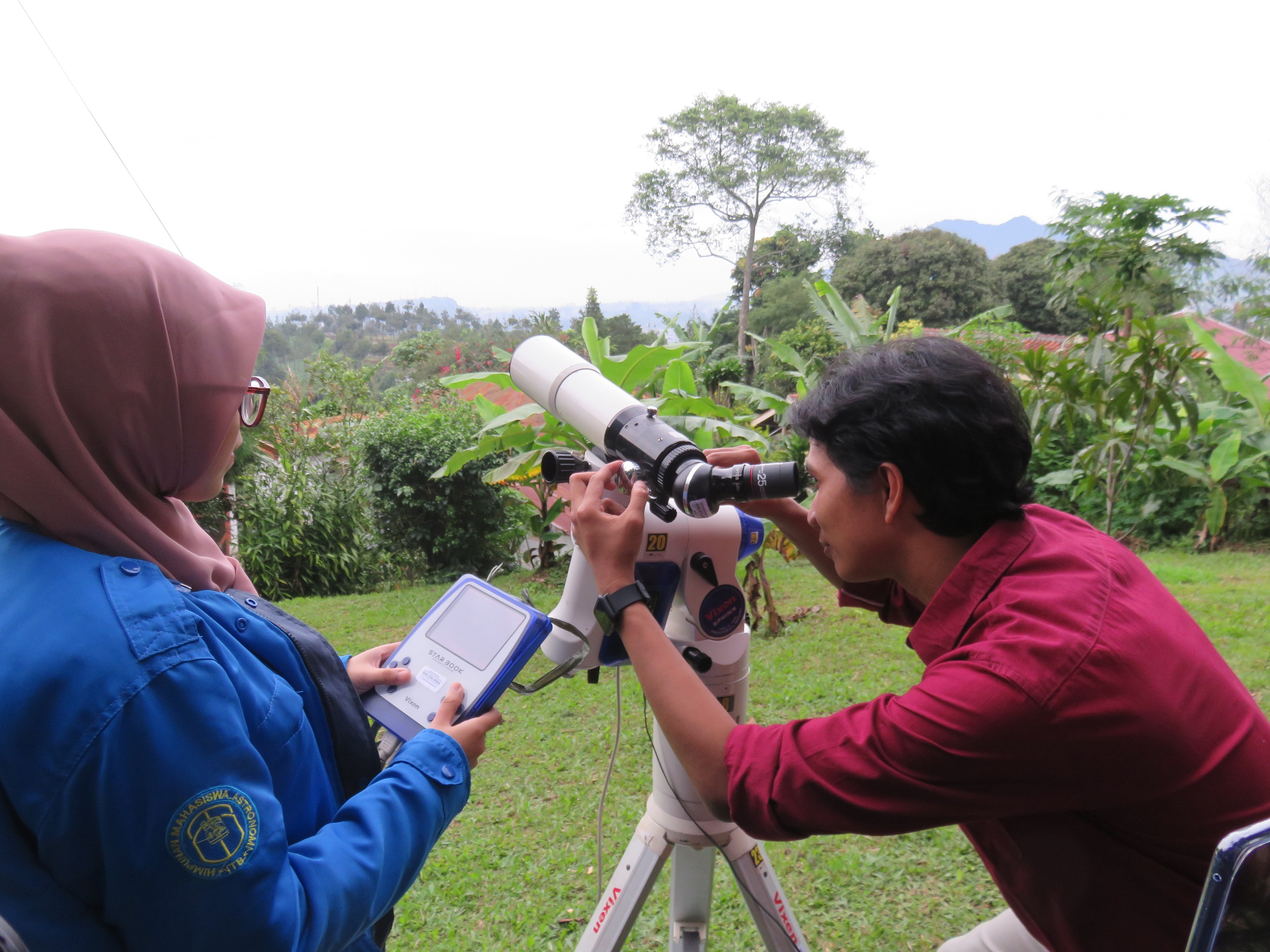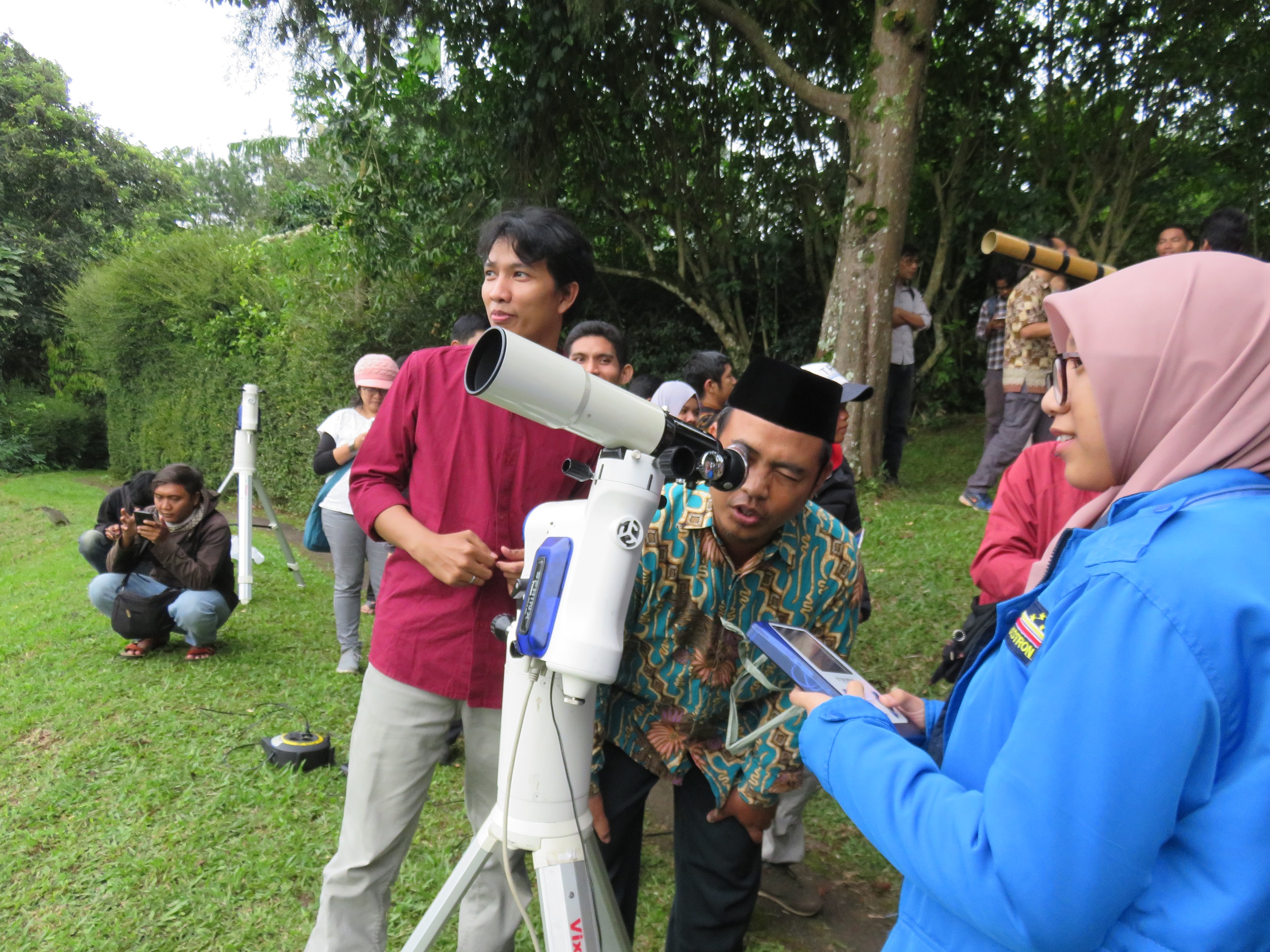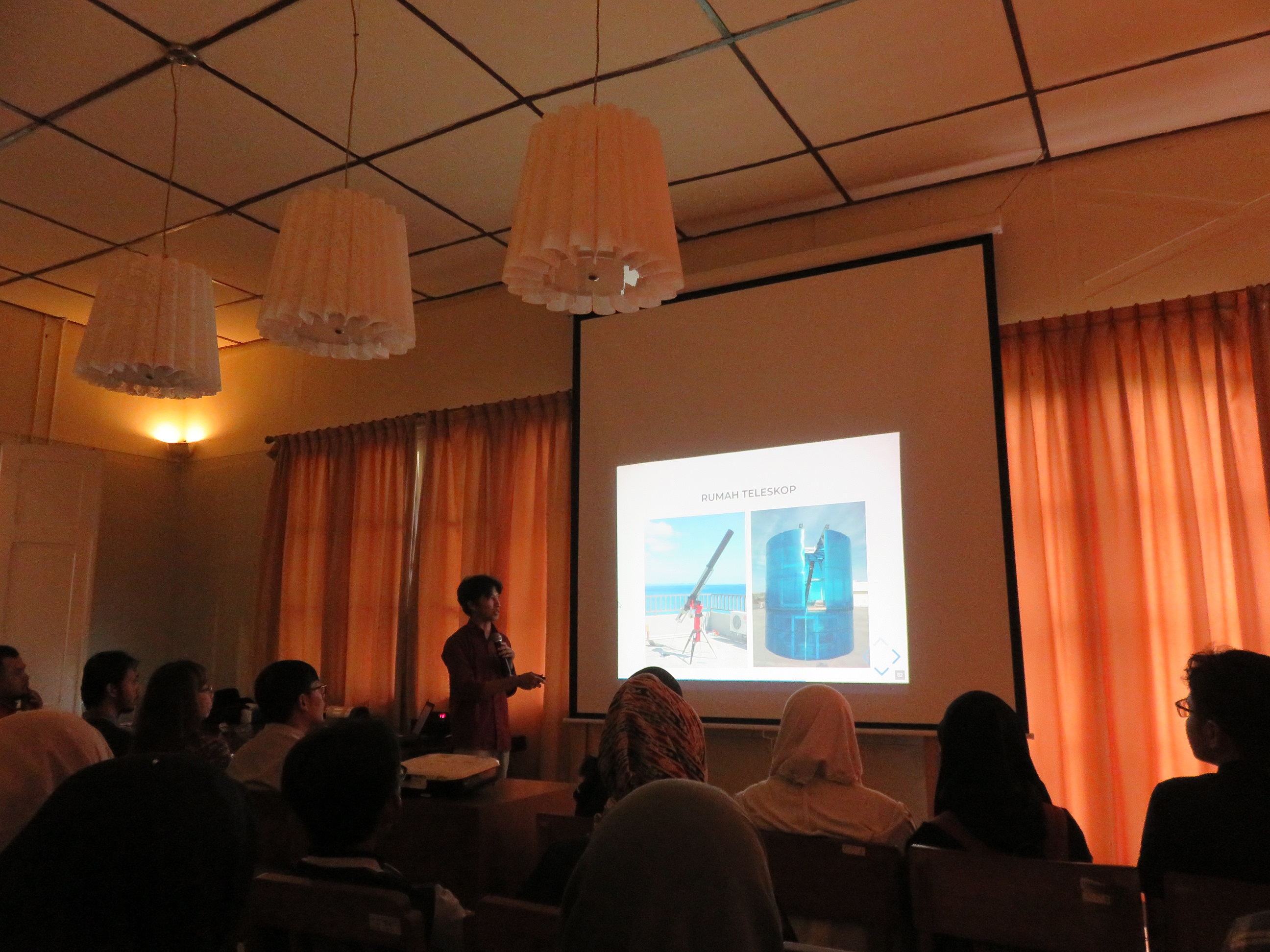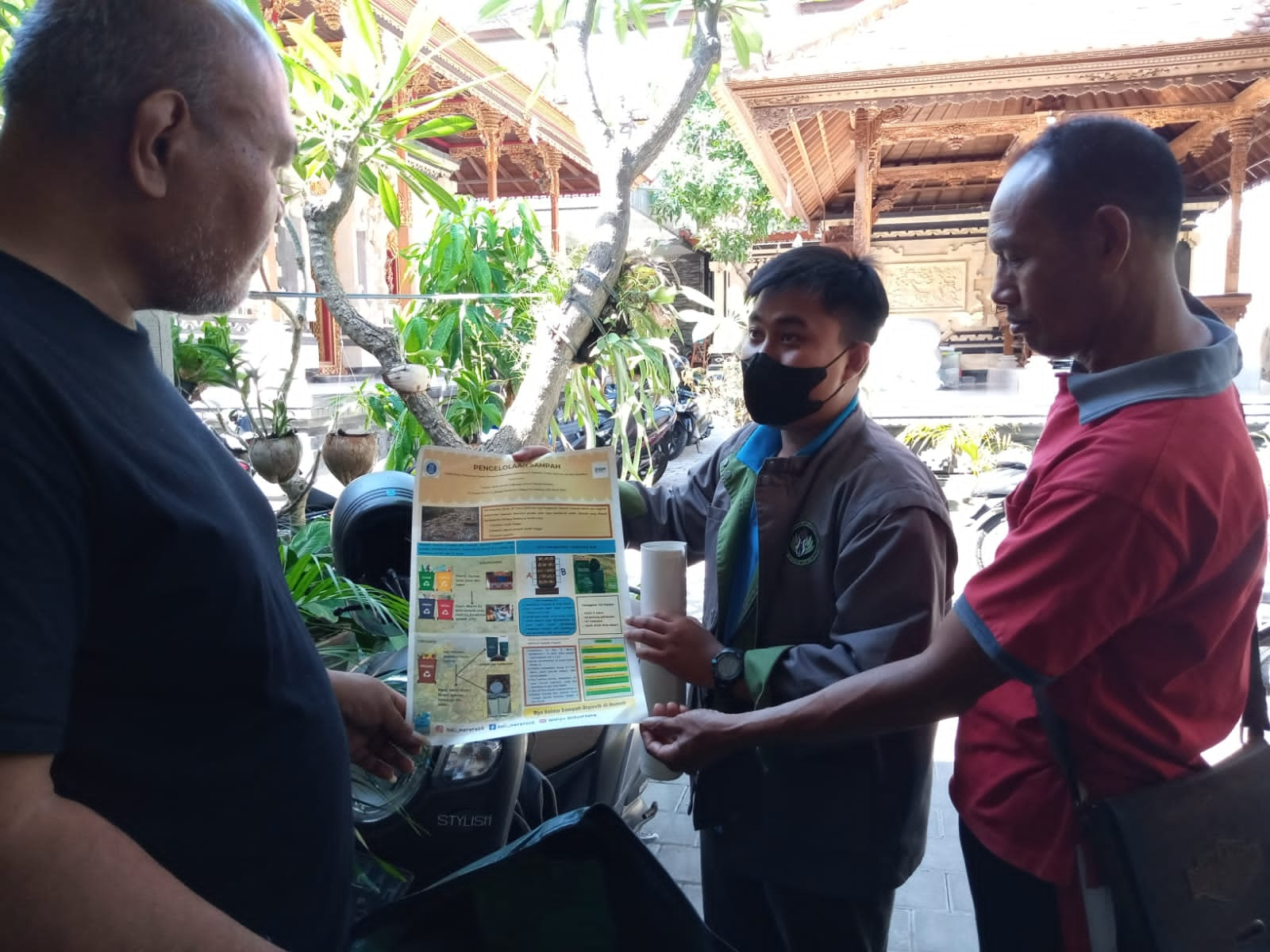Dissemination about Dark Sky Preservation and Islamic New Month Observation
By Adi Permana
Editor Adi Permana
 (Photo by: PR of ITB)
(Photo by: PR of ITB)
*A Bosscha researcher, Muhammad Yusuf observing hilal in Bosscha Observatory, Lembang.
LEMBANG, itb.ac.id – Observation of Islamic new month or ‘hilal’ and dissemination about “Dark Sky Preservation” was conducted by Bosscha Observatory of Institut Teknologi Bandung (ITB) in a gathering at Wisma Kerkhoven, Bosscha Observatory Complex, Lembang on Thursday (7/3/2019). The event was organized together with Astronomy Student Society in commemoration of 60th Dies Natalis of ITB.
Head of Bosscha Observatory, Premana W. Premadi, Ph. D., explained that the gathering aims to give deep comprehension, specifically regarding hilal observation and generally regarding astronomy. The gathering also saw dissemination regarding the importance of dark sky in conducting observation around Bosscha Observatory. Hence, stakeholders such as LAPAN, Ministry of Religious Affairs, Imah Noong, SESKO-AU, KOWAD, SESPIMPOL, Chief of Lembang Village, Chief of Gudangkahuripan Village, and Head of Lembang Sub-district also attended the gathering.
Mass media such as printed, online, television, and radio were also invited. Hopefully they can become science communicators that spread the information regarding dark sky and condition of hilal observation. “The aim of this gathering is to enhance the cooperation between Bosscha Observatory as educational, research, and community service institution and mass media as communicators to community,” Premana said.
Researchers in Bosscha require dark sky to conduct observation. Hence, Bosscha Observatory carried out several efforts regarding dark sky preservation such as dissemination of lamp cover use to prevent excessive light spread. Besides for research, dark sky preservation is also needed to keep the balance of nature ecosystem. “Bats and other living organisms will get disturbed by light pollution.” Premana explained.
In the gathering, Bosscha handed out infographic pamphlets about dark sky preservation, and handed out bookmarks depicting starry sky taken in Kupang, Nusa Tenggara Timur (NTT). Attending guests were also pointed as Starry Sky ambassadors who preserve our starry sky to keep it observable using only bare eyes.
Observation of Rajab 1440 H
Observation toward the hilal of Rajab 1440 H was also conducted using telescope during the gathering. Observation started at 18.06 at sunset and the hilal were observed for 37 minutes. However, the sky was cloudy and made it difficult to observe. Participants also received explanation regarding the position of the Moon and the Sun (elongation), azimuth, and moon height.
According to a Bosscha researcher, Muhammad Yusuf, Hilal observation is not easy to conduct. Since 2008 during his days of observing hilal, he have never seen hilal with his bare eyes. It means that observing hilal is difficult without the use of telescope.
The difficulties faced are the contrast, because hilal is thin and emerges on contrast sunlight. “Sunlight is 401,000 times brighter than Moonlight,” Yusuf said.
He explained that Earth’s atmosphere is not an empty space but contains particles that disperse lights. Lights that come from distant objects will get blocked by the particles. Moreover, geometry of the Moon, the Earth, and the Sun also determine the result. If hilal is under 2 degrees, it will be difficult to observe.
Therefore, Yusuf said, telescope is required to observe hilal. The telescope should possess high quality with medium diameter, length combination, focus and right size of sensor. The camera should possess high resolution, high frame rate, monochrome lens and uncompressed digital data.
“So, to conduct observation, preparation is important, whether it is the location, sky clarity, height, and time,” he explained, showing several pictures taken from hilal observation in Kupang, NTT. On that occasion, a presentation about Hilal Philosophy and the Importance of Quality Hilal Observation was also addressed by Dr. Moedji Raharto.
Reporter: Moch. Akbar Selamat (Management 2020)



.jpg)

.jpg)
.jpg)
.jpg)

